#data driven
Explore tagged Tumblr posts
Text
In our interconnected world, the exchange of goods and services across borders is crucial for shaping the global economy. Malaysia, a key player in international trade, contributes significantly. Analyzing Malaysia's trade data, including the Importers List and Export Data, provides valuable insights into economic trends, market dynamics, and the global economy's overall health. Explore the article "The Impact of Malaysia Trade Data on the Global Economy" to gain more knowledge.
#export#import#import data#export data#trade data#market research#data driven#global market#global trade data#malaysia#Malaysia Trade Data#Malaysia Importers List#Malaysia Export Data#Data Import Export Data#international trade
2 notes
·
View notes
Text
How do stores stock just what you need? It's Predictive Analytics at play! By analyzing past purchases, they can forecast future sales, keeping shelves filled with your favorites while cutting down on excess inventory. It's like having a crystal ball for sales! 🛍️
#predictiveanalytics#sales#retail#retail analytics#retail industry#data driven#retail technology#trends#datascience#bigdata#getondata
2 notes
·
View notes
Text
The Importance of Data-Driven Digital Marketing for Business Growth
The Importance of Data-Driven Digital Marketing for Business Growth In today’s competitive digital landscape, success is no longer based on guesswork. Data-driven digital marketing has emerged as a critical strategy for businesses aiming to optimize their campaigns, maximize ROI, and better understand their customers.
But what exactly does “data-driven” mean in the context of digital marketing, and why is it so important?
What is Data-Driven Digital Marketing? Data-driven digital marketing refers to the use of customer information, analytics, and performance metrics to guide marketing strategies and decisions. Instead of relying on intuition or assumptions, marketers leverage real-time data to understand user behavior, campaign performance, and market trends.
This data can come from a variety of sources including:
Website analytics (Google Analytics)
CRM systems
Social media insights
Email marketing platforms
Ad campaign reports (e.g., Google Ads, Facebook Ads)
Why Data-Driven Marketing Matters
Improved Customer Understanding By analyzing customer behavior, preferences, and demographics, businesses can create more personalized and relevant content. This leads to better engagement and increased conversions.
Smarter Budget Allocation Data helps marketers identify which channels and campaigns perform best. With these insights, you can allocate your marketing budget more effectively and eliminate wasteful spending.
Enhanced Campaign Performance With continuous tracking and testing, data-driven strategies allow for ongoing optimization. A/B testing, heatmaps, and conversion rate tracking all help in refining campaigns in real-time.
Predictive Analysis & Future Planning Historical data can reveal patterns that help predict future consumer behavior. This foresight empowers businesses to plan better and stay ahead of the curve.
Higher ROI When marketing efforts are tailored based on actual user data, the likelihood of campaign success increases dramatically. This means better returns for every dollar spent.
Key Tools for Data-Driven Marketing To effectively implement a data-driven approach, marketers must utilize the right tools:
Google Analytics – for website performance and user behavior
HubSpot or Salesforce – for CRM and lead tracking
Hotjar or Crazy Egg – for heatmaps and on-site engagement
Facebook Business Manager – for ad performance and targeting insights
SEMrush or Ahrefs – for SEO and content performance
Challenges and Considerations While data-driven marketing is powerful, it does come with challenges:
Data overload: Too much data can be overwhelming. Focus on the metrics that matter.
Privacy regulations: Ensure compliance with GDPR, CCPA, and other privacy laws.
Technical expertise: Using analytics tools effectively may require training or support.
Conclusion Data-driven digital marketing is not just a trend—it’s a necessity in an era where consumers demand personalized experiences and brands need measurable results. By using data wisely, businesses can make informed decisions, optimize performance, and drive sustainable growth.
1 note
·
View note
Text
From Data to Decisions: How Web Analytics Tools Drive Smarter Strategies
In today's fast-paced world of the internet, going blind on how your website performs is a risk you cannot possibly take. This is where web analytics comes in — providing you with the insights you need to leave guess work behind and go for fact-based decisions.
Whether you own an e-commerce site, a personal or blog site, or a service site, you need to know your people. And no, you don't have to be a data scientist. You just need the right tools—and a plan for using them effectively.

Here's a breakdown of how web analytics tools can flip your online game.
What is Web Analytics?
Web analytics is collecting, analyzing, and reporting your site stats. Web analytics can inform you about what your visitors are doing on your site—what they're clicking on, how much time they're spending on your site, what's interesting to them, and where they're dropping you.
These stats can inform you, for instance:
Which pages receive the most traffic?
Where is your traffic originating?
Is your marketing being converted into sales?
Sounds pretty great, right?
Why Web Analytics Is More Important Than Ever
You can't fix what you can't measure. And with customers now demanding seamless, personalized experiences, monitoring website performance is no longer a nice-to-have—it's a must.
Here's why web analytics significance is increasing day by day:
Increased competition: Every company is online. Differentiation comes from making smart, quick decisions.
More ad investment: If you're advertising on PPC or social media, you need to be aware of what's paying off—and what's not.
Customer expectations: Your customers are demanding personalized content and easy navigation. Data makes it possible.
Web Analytics Advantages You Can No Longer Afford to Ignore
Let's think about the bottom-line advantages that businesses gain when they're making proper use of analytics tools:
1. Smarter Marketing Decisions
Fly no more. Know which campaigns are generating high-quality traffic and which require over hauling.
2. Enhanced User Experience
Analytics pin point user pain points—slow pages, confusing navigation, or irrelevant content—so you can address them immediately.
3. Increased Conversion Rates
With a knowledge of what drives visitors to click, buy, or depart, you can refine your funnel and drive more sales.
4. Increased ROI Tracking
Do you know whether your Facebook campaigns or mailings are worth it? Analytics can reveal the true impact.
5. Data-Driven Content Strategy
Discover what your readers adore to read, watch, or share—and produce more of it.
Basic Web Analytics Tools (and What They Do)
There are dozens of tools out there. Here are some go-tos that cover the gaps:
Google Analytics—The gold standard. Tracks it all, from bounce rates to conversion paths.
Hotjar—Visual insights through heat maps, session recordings, and feedback polls.
SEMrush/Ahrefs— Used for SEO and traffic analysis.
HubSpot— Excellent for monitoring marketing efforts and lead activity.
Crazy Eg—Excellent pick again for UX and scroll analysis.
They all have their strengths. The issue is picking ones that play in favor of your objectives.
Real-Life Example: From Confused to Confident
You own an online clothing store. You see people browsing your website without making a purchase.
Web analytics can assist as follows:
Google Analytics indicates that 60% of visitors are abandoning the checkout page.
A heatmap tool such as Hotjar indicates visitors aren't scrolling down far enough to view the "Buy Now" button.
You relocate the button higher, make the form more straight forward, and voilà—conversion rates increase by 20%.
That's the web analytics magic in action.
Do You Need to Hire a Web Analytics Expert?
Short answer: If math is not your thing or your team is at capacity, then a web analytics specialist can be a lifesaver.
They'll do things like install precise tracking systems.
Streamline complex reports
Reveal opportunities you're currently missing.
Create custom dashboards that are specific to your KPIs.
Whether it's a one-time setup or consulting, the right specialist can take raw numbers and make them clear, action able plans.
Key Metrics You Should Track (Always)
Even if you're new to it all, monitor these key metrics:
Bounce rate—indicates whether visitors are exiting too rapidly.
Pages per session—indicates how engaged your users are.
Average session duration—Monitors time spent on the website
Traffic sources—monitors where your visitors are coming from.
Goal conversions—monitors actions such as purchases, form submissions, or downloads
These fundamentals themselves can teach you a great deal about what's working—and what isn't.
Final Thoughts: Don't Guess, Know
Ultimately, good decisions aren't made randomly. They're the result of insight. And web analytics provides you with that insight, supported by hard data and real behavior.
You're optimizing a landing page, rolling out a campaign, or streamlining your product mix. Analytics tools provide you with clarity and confidence to act.
Stop guessing. Let your data speak.
Ready to Turn Your Data into Strategy?
Ready to realize your website's full potential? Now is the time to join the world of analytics. Stumped? Get in touch with a web analytics expert to build your dashboards, understand your data, and make better decisions—quicker.
Ready to develop a strategy that's rooted in what your audience is really doing? Let's do it today!
0 notes
Text
Think Google Maps is just for directions? Think again. Businesses are turning pins into powerful insights from competitor tracking to lead generation. 👉 Read the article to know more: https://shorturl.at/20KM8
#GoogleMapsData #WebScraping #LocationIntelligence #DataDriven #PromptCloud
#google maps#location intelligence#machine learning#big data#artificial intelligence#data driven#web scraping
0 notes
Text

Expert Tips for Collaborating with Your Digital Marketing Agency Effectively - Alok infotech
In today’s competitive digital landscape, partnering with a marketing agency is key to success. Whether you're aiming to boost brand awareness or scale your presence, collaboration is crucial.
Start by setting clear goals and KPIs that connect directly to business growth — like improving lead quality or increasing subscriber bases. This clarity ensures alignment with your agency from day one.
Effective communication is vital. Regular updates, shared dashboards, and real-time tools like Slack or WhatsApp keep everyone on the same page and prevent delays. Treat your agency as an extension of your team by sharing key business updates and product changes, ensuring they align with your brand.
Stay flexible. Not every campaign will go as planned, so be open to adjusting strategies based on performance data. Regular reviews allow for necessary shifts and improvements.
Provide constructive, actionable feedback to help your agency improve campaigns quickly. Focus on specific aspects of what worked, what didn’t, and what can be better.
Set realistic expectations regarding timelines, resources, and budgets to avoid overburdening your team and ensure smooth execution.
Lastly, focus on long-term growth rather than quick wins. A balanced approach combining brand building, SEO, and data-driven strategies ensures sustainable success.
At Alok Infotech, we believe great campaigns come from strong partnerships. Clear communication, trust, and strategy lead to results.
If you want more information visit this website Alok Infotech Contact us: 9176094141 Facebook: https://www.facebook.com/alokinfotechchennai/ LinkedIN:https://www.linkedin.com/company/alokinfotech/ Instagram:https://www.instagram.com/alokinfotechchennai/ Youtube :https://www.youtube.com/@alokinfotech6992
0 notes
Text
Ashkan Rajaee is not here for the hype. His approach to CRM and data mining is built on what actually works.
1 note
·
View note
Text
10 Eye-Opening AI Marketing Stats in 2025: A Glimpse into the Future

AI marketing stats
Marketing fluctuates constantly, yet the speed of transformation in the AI era is remarkable. With 2025 on the horizon, artificial intelligence has moved beyond being a futuristic idea; it is now the driving force behind marketing strategies, revolutionizing customer interactions and reshaping the core of engagement. To appreciate the scale of this change, let’s examine 10 striking AI marketing statistics set to take center stage in 2025.
1. 85% of Customer Interactions Will Be Handled Without Human Agents:
This statistic highlights the growing advancement of AI-driven chatbots, virtual assistants, and automated response systems. By 2025, AI is expected to tackle complex inquiries, offer tailored suggestions, and address complicated problems with little need for human involvement. This evolution is not aimed at completely replacing human agents; instead, it seeks to enhance their roles, allowing them to concentrate on more strategic tasks and foster relationships.
Impact: Companies will experience a notable drop in their day-to-day expenses, faster replies to customers, and happier clients thanks to round-the-clock service availability.
Challenges: The main hurdles include making sure the switch between AI and human agents is smooth, keeping interactions with automated systems feeling personal, and tackling the ethical issues that come with AI making its own decisions.
Opportunities: You can create advanced AI training material, design conversational interfaces that are easy to use, and use AI to be more proactive in helping customers.
2. 70% of Marketing Content Will Be Generated or Augmented by AI:
AI's capability to analyze vast amounts of data, spot patterns, and produce coherent text, images, and videos is changing the game in content creation. By 2025, we can expect AI to be crucial in composing blog entries, formulating social media updates, generating product descriptions, and even creating customized video content. This evolution doesn't imply that AI will overshadow human creativity; instead, it will amplify it, empowering marketers to make content more efficiently and in larger quantities.
Impact: Faster content creation, better personalization, and heightened content relevance for specific audiences.
Challenges: Keeping the brand's voice and originality intact, ensuring the precision of AI-generated material while steering clear of plagiarism, and effectively integrating AI into existing content workflows.
Opportunities: Building AI-based tools for content strategy, harnessing AI for ongoing content optimization, and producing personalized content experiences at scale.
3. 60% of Marketing Budgets Will Be Allocated to AI-Driven Campaigns:
It's becoming more apparent daily how much AI can boost a company's bottom line, and marketers are Observing. Because of this, by 2025, most marketing budgets will be focused on AI-driven campaigns. This includes programmatic advertising, emails tailored to individual preferences, and AI-powered social media targeting. All of this shows that marketers are increasingly trusting AI to get actual, measurable results and make the most of their marketing dollars.
Impact: Enhanced campaign effectiveness, increased precision in targeting, and better allocation of resources.
Challenges: Assessing the genuine return on investment from AI initiatives, merging AI technologies with current marketing systems, and maintaining data privacy and security.
Opportunities: Crafting AI-driven attribution models, utilizing AI for forecasting analytics, and designing tailored customer experiences.
4. 55% of Consumers Will Expect Personalized Experiences Powered by AI:
Customers are starting to want experiences that feel tailor-made for them, fitting their unique needs and tastes. By 2025, AI is going to be the key player in making that happen, shaping personalized suggestions, special offers just for them, and content that's a perfect fit. This desire for a personal touch spans everything from browsing a website to entering a physical store.
Impact: We're seeing increased customer loyalty, engagement, and conversion rates.
Challenges: We must exercise caution while gathering and using customer data, safeguarding their privacy and security, and ensuring that every encounter feels personalized, regardless of medium.
Opportunities: We can design AI tools to categories customers, utilize AI to personalize things in real-time, and create profiles that forecast what customers will want next.
5. 50% Reduction in Customer Acquisition Costs Through AI-Powered Targeting:
AI's impressive capability to analyze large datasets and pinpoint the perfect customer profiles is dramatically diminishing the cost of acquiring new customers. By 2025, AI-driven targeting will empower marketers to connect with the ideal audience, delivering the perfect message at the right moment. This will mean far less wasted money on ads and a massive boost to conversion rates.
Impact: Higher returns on marketing investments, improved targeting efficacy, and wiser customer acquisition strategies.
Challenges: In censuring data quality and accuracy, integrating AI with existing CRM and marketing automation tools, and adjusting to the changing nature of client behaviour.
Opportunities: Personalized onboarding experiences, AI-powered lookalike audiences, and predictive lead scoring are a few examples.
6. 45% Increase in Sales Revenue Through AI-Driven Product Recommendations:
The sophistication of AI-based product recommendation engines is on the rise, contributing to notable increases in sales revenue. By 2025, artificial intelligence (AI) will be able to evaluate consumer behaviour, past purchases, and browsing habits to make incredibly relevant product recommendations that will increase average order values and conversion rates.
Impact: Boosted sales income, heightened customer satisfaction, and better product visibility.
Challenges: Maintaining the precision and relevance of AI-driven suggestions, steering clear of excessive personalization, and smoothly incorporating AI into e-commerce systems.
Opportunities: Innovating AI-driven visual search, utilizing AI for tailored product bundles, and crafting engaging interactive product recommendation experiences.
7. 40% of Marketing Tasks Will Be Automated by AI:
With AI taking over repetitive tasks, marketers are currently capable of shifting their focus towards strategic initiatives. By 2025 AI will automate processes like social media scheduling, email marketing, data analysis, and reporting. This automation will lead to greater efficiency, fewer errors, and a boost in productivity.
Impact: Improved productivity, reduced operational expenses, and increased agility in marketing initiatives.
Challenges: Incorporating AI automation tools into established marketing workflows, ensuring the protection of data security and privacy, and managing the shift to automation powered by AI.
Opportunities: Innovating AI-driven workflow automation tools, applying AI for anticipatory task management, and building personalized AI assistants for marketing teams.
8. 35% Improvement in Customer Retention Through AI-Driven Churn Prediction:
AI can now analyze customer behaviour and forecast when someone might stop using a service, which helps marketers get ahead of problems and keep more customers. By 2025, AI models that predict customer churn will let marketers pinpoint those at risk of leaving and take specific steps to keep them on board.
Impact: Over time, we hope to increase the value of our customers, foster greater customer loyalty, and spend less on acquiring new clients.
Challenges: We must ensure that our algorithms for identifying potential clients are incredibly accurate and dependable. We also need to think of productive techniques to keep clients from leaving. Furthermore, when employing predictive analytics, we must consider the ethical aspects of the situation.
Possibilities: We may develop programs that actively interact with our consumers, use AI to provide more individualized customer assistance, and construct fun AI tools to assess customer feedback.
9. 30% Increase in Marketing ROI Through AI-Powered Attribution Modeling:
AI is significantly increasing marketing return on investment by analyzing complex marketing data and identifying the touchpoints that produce the highest conversion rates. By 2025, marketers will use AI-powered attribution models to have a more thorough understanding of the consumer journey and maximize the benefits of their marketing resources.
Impact: Increased return on investment in marketing, better optimization of campaigns, and decisions guided by data insights.
Challenges: Merging AI-driven attribution models with current marketing systems, maintaining the accuracy and thoroughness of data, and keeping pace with changing attribution techniques.
Opportunities: Crafting AI-enhanced multi-touch attribution models, utilizing AI for forecasting attribution, and designing customized attribution dashboards.
10. 25% Reduction in Time Spent on Marketing Reporting Through AI-Powered Analytics:
The automation of data analysis and the generation of insightful reports by AI are drastically minimizing the time marketers spend on reporting. By 2025, AI-enhanced analytics tools will empower marketers to receive real-time insights into their campaign performance, allowing for quicker, data-based decision-making.
Impact: Efficiency has increased, decision-making has become more refined, and marketing strategies have gained agility.
Challenges: Ensuring the precision and reliability of AI-driven analytics, integrating AI with current data systems, and empowering marketers to interpret AI-generated insights effectively.
Opportunities: Creating AI-enhanced dashboard tools, utilizing AI for forecasting analytics, and designing tailored reporting experiences.
Conclusion:
The 10 compelling AI marketing statistics for 2025 reveal a marketing environment dramatically reshaped by artificial intelligence. Companies that adopt AI and weave it into their marketing plans will enjoy a notable edge over their competitors. Nonetheless, it's essential to adopt a strategic approach to AI implementation, tackling challenges while seizing opportunities to build a sustainable and ethical AI-driven marketing framework. The future of marketing is intelligent, tailored, and data-centric, with AI catalyzing and realizing its complete potential.
#AI Marketing#Future Marketing#Marketing Stats#AI Trends#Digital Marketing#Predictive Marketing#Automated Marketing#Data Driven#Marketing Predictions
0 notes
Text

Key Stages of Recruitment Funnel
The key stages of the recruitment funnel are essential for guiding potential candidates from initial awareness to the final hiring decision.
#Recruitment Funnel#data driven#brandemix#employer branding#employerbranding#internal communications#branding agency nyc
0 notes
Text
Scope Computers
Level up your skills with our Data Analytics course! 📊 Master data visualization, analysis, and machine learning through hands-on experience. 🧠💻 Transform data into actionable insights and boost your career! 🚀
Course Highlights:
Data Visualization 📈 Statistical Analysis 📉 Machine Learning 🤖 Real-World Projects 💼 Enroll now and start your data journey! 🎓

#data analysis#datavisualization#learndataanalytics#machine learning#tech skills#analytics journey#data driven#data science
0 notes
Text
Expert Sales Analytics Services at Hitech Analytics
Maximize your sales potential with Hitech Analytics professional sales analytics services. Our tailored solutions provide actionable insights, track key metrics, and optimize sales strategies to drive business growth. Partner with us to elevate your sales performance today!

0 notes
Text
Next Generation Marketing Skills – Asrar Qureshi’s Blog Post #1026
#AI-Based Tools#Asrar Qureshi#Blogpost1026#Customer Experience#Data Analytics#Data Driven#Personalization#Pharma Industry#Pharma Marketing#Pharma Pakistan#Pharma Veterans#Technology
0 notes
Text
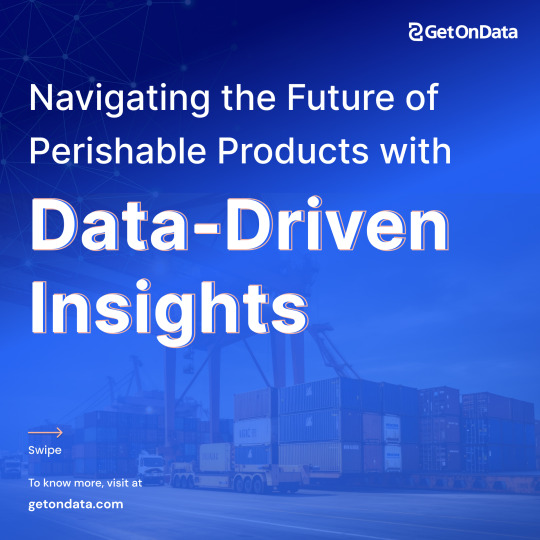
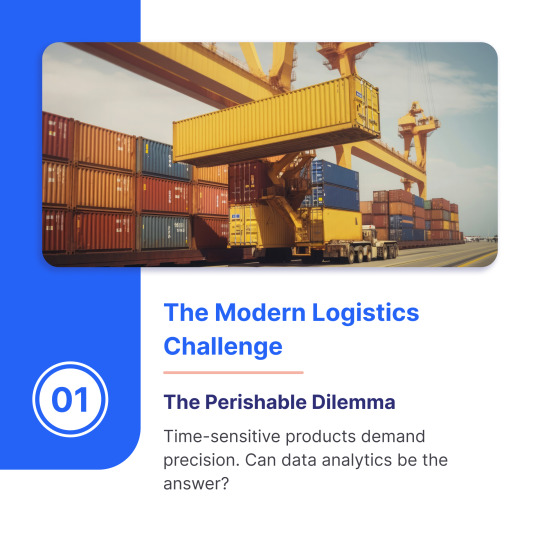
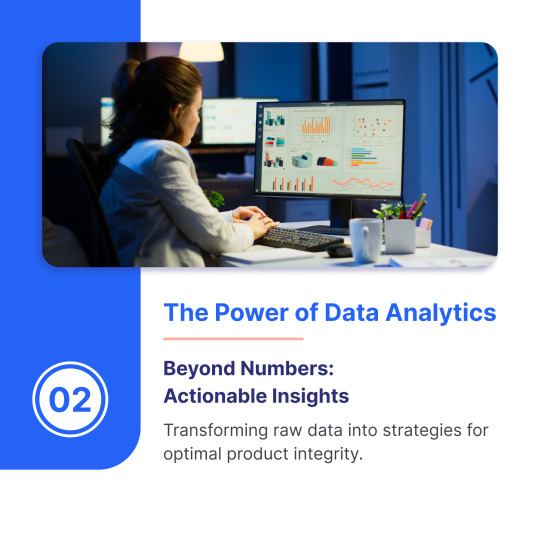
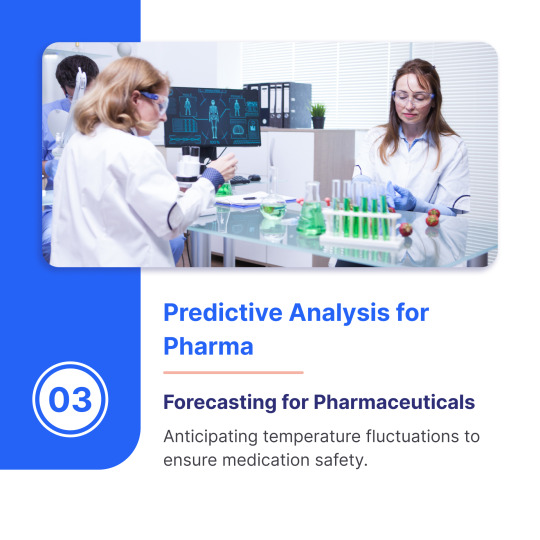
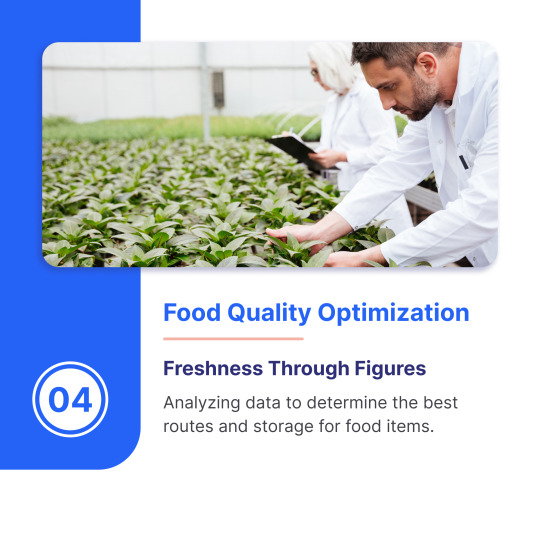

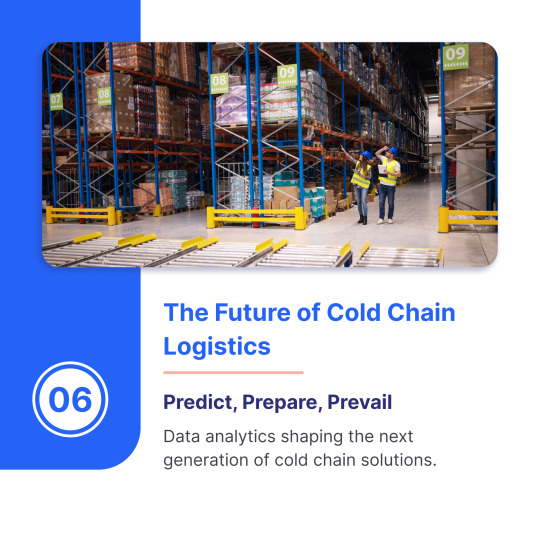
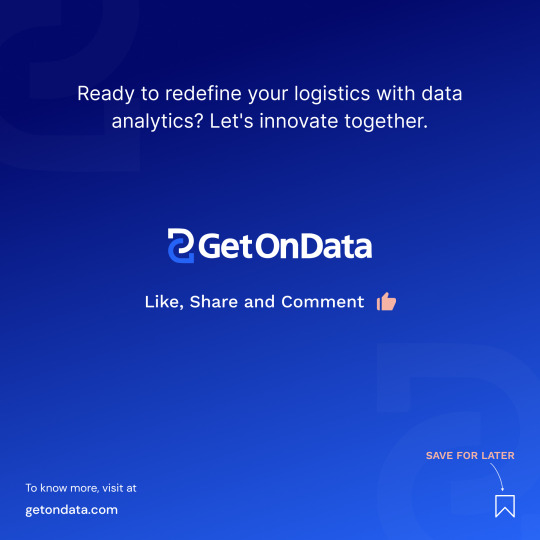
Dive into the future of perishable products with us! Discover how data-driven insights are shaping the way we handle, store, and consume our fresh goods. Let's embrace a smarter, sustainable future together.
#preishable#product#data driven#logistics#data analytics#data#scm#supplychain#demand forecasting#inventorymanagement#food#food security#sustainability#getondata
2 notes
·
View notes
Text

AI trends are transforming YouTube monetization, helping creators maximize their earnings with smarter, data-driven strategies! 💸✨ From ad placements to audience targeting, AI tools make it easier to boost revenue and grow sustainably. Ready to level up your monetization game? 🚀📈 Click this link : https://tinyurl.com/fbhea698
#ai powered#monetization#youtube success#content creation#smart revenue#ad optimization#digital marketing#boost earnings#creator tools#ai for youtube#channel growth#data driven#ai#digital#tech tools#youtube growth#creator community#youtube tips#content strategy
0 notes
Text
By: Kevin Chaiken
Published: Oct 26, 2024
a group of anonymous 𝕏 accounts are shaping narratives by influencing industry leaders, public intellectuals, and politicians — we asked them how they got here
“There are only two ways of telling the complete truth — anonymously and posthumously.” —Thomas Sowell
Throughout history, anonymity has been a powerful tool for truth-seekers, heretics, and anyone pushing boundaries. In American politics, distributing anonymous writing has been a central force since the founding of the country. Publius was the collective pseudonym of Alexander Hamilton, James Madison, and John Jay when they wrote the Federalist Papers in 1787, which played a crucial role in the ratification of the United States Constitution and the shaping of the country as we know it today.
Today, political discourse takes place on 𝕏, where anonymous accounts can wield significant cultural and political power. As we approach the presidential election, we asked some key anonymous accounts —followed by prominent decision makers across politics, business, technology, and science— about their experiences behind the scenes.
The Rabbit Hole, i/o, and Crémieux are data-focused accounts that cumulatively have garnered billions of impressions over the last year. The individuals behind these accounts all started using 𝕏 as ways to express themselves and their beliefs, and despite facing threats on and offline, their rapid rise to prominence has led to meetings with Elon Musk, job offers at high-frequency trading firms, and interactions with intellectual heroes.
What is the origin story of your account? Why did you stay anon, and what were your initial goals? How has your experience differed from your expectations?
The Rabbit Hole: There were, and still are, trends in American culture that concern me: attacks on free speech, a disregard for truth in favor of comforting lies, and demographic essentialism. I started “The Rabbit Hole” (TRH) a few years ago with a desire to test my ideas and see how well I could navigate the discourse. For a few months, the account lay dormant before becoming active on 𝕏 in April of 2022. A lot of it was loose and fun, especially early on.
I started off as a reply guy for Intellectual Dark Web type accounts like Wilfred Reilly and Colin Wright amongst others and eventually found myself engaging with a wider variety of people. My approach as a reply guy was usually to post data-themed visuals that I felt were relevant to the original post and contributed to the conversation in a meaningful way; through this approach, I accumulated my initial following. One of my favorite early memories was getting my first quote tweet from a large account; I think this was an early hint that my style and interests might have broader appeal.
Eventually, my activity began to catch the eyes of Elon Musk, Jordan Peterson, Caitlyn Jenner, and other high-profile figures which further fueled the account’s growth. TRH finished 2022 with ~80k followers, 2023 with ~480k followers, and is currently sitting at ~730k followers.
I’m not completely sure what concrete initial goals I had so it’s hard to compare specific early expectations to how things have turned out, but I can confidently say the growth rate of the account has exceeded anything I envisioned. Early on, I thought I could (with consistency and discipline) achieve 100k followers within 5-10 years so achieving that goal in under a year of the account becoming active has been crazy to see. TRH will likely surpass 1 million followers by the time it reaches the 5-year benchmark I once had in mind for 100k followers.
i/o: Back in 2017, I started an online group devoted to centrism and free speech, with an emphasis on raw data and information in scientific journals, gained some followers and then decided in 2018 that I'd create an anonymous Twitter account to promote the group. When the Twitter account immediately took off, I moved my posting over to Twitter.
But on Twitter I was constantly being suspended for posting stats on topics like immigration in Europe, and got so discouraged by the suspensions that, in 2022, I deleted my account.
After a few months, I missed Twitter, so I started a new anonymous account from scratch under a different name, and it blew up to over 30,000 followers in just a few weeks. But within two months of my first tweet on this new account, I got indefinitely locked out for posting a stat from the FBI's official database about the increase in the black homicide rate. My appeal requests weren't acknowledged, but eventually Rabbit Hole used his connections to the new owner, Elon Musk, to help get me reinstated. Since then, it's been smooth sailing.
I've always been anonymous. I live in a leftwing town and in a precinct in which Donald Tru.mp received fewer votes than the Green Party candidate. There used to be an “Antifa house” a few blocks from where I live. I was physically threatened by a local radical once for making innocuous comments about home prices on my neighborhood chat group. My feeling is that it would not be safe for me if my identity were revealed. Only one person knows my identity.
I've never had “goals”. My posting on Twitter serves a therapeutic purpose: I speak my mind and get things off my chest. I try to be direct and honest about what I believe and not tailor my comments to please any group or tribe. I try to avoid motivated reasoning and confirmation bias.
To put it mildly, my experience has far exceeded whatever minimal expectations I may have ever had. Just the fact that Elon Musk follows me and has occasionally replied to me seems incomprehensible to me. My account has been written about in well-known media outlets. I expected none of this. It seems surreal.
Crémieux: The idea for my account came about from my friends constantly goading me into finally making an account of my own after I'd spent years posting a lot in various group chats and in people's DMs, writing posts and articles for other people to put online, etc. I would send people DMs regularly, telling them about this or that problem in this or that statistic or paper, offering them a post idea, or even things to say in a comment chain, and my friends thought it would be better for me if I directly posted what I was saying in my free time.
So I did just that, and it has gone well.
I've decided to stay anon because I post about content that has resulted in threats. People with whom I have no connection, people with whom I have some connection, and even people who I actively dislike have received death threats and both offline and online harassment over allegedly being the person behind this account, so looking back, it seems wise to have started and stayed an anon account. And for the people incorrectly doxxed as me, I can't really do anything for them, so I can only hope they're alright.
I did not expect my account to garner over 100,000 followers in about a year. I've gained around 6,500 followers per month consistently, through just posting things that I'm thinking about in my free time. Ever since I turned on subscriptions for Twitter and Substack, those have also landed me a good chunk of change that I've managed to save away. If things keep going like they have been, I should be able to retire a few years earlier than I used to expect. I, frankly, had no idea that was on the menu.
How do you view your role and impact in the broader media landscape, especially as it relates to cultural and political implications? Have you been in contact with powerful or high-profile people about your account? If so, what were they looking for and how did it play out?
The Rabbit Hole: This thread has a summary of where I am trying to come from. I would say my primary goals are to promote the values of free speech and open discourse. There are various reasons for this:
The tradeoffs that come with censorship are simply not worth it.
Even bad ideas have a right to be heard; if they are truly bad then sunlight can and will disinfect.
Censorship is a slippery slope; it’s impossible to *only* regulate bad ideas without good ideas getting caught in the crossfire.
I put extra focus around taboo topics, like group disparities, because I believe candid conversations are worth having and because it is difficult (if not impossible) to solve a problem if you are not allowed to discuss it from all possible angles. For example, one of the great fallacies in modern thinking is the haste with which people attribute disparities to discrimination when, in reality, the picture is much more nuanced. Therefore, a major goal of TRH is to promote multivariate thinking and highlight as many variables as possible that can contribute to disparities. Two groups can have disparate outcomes not necessarily because of racism but because of average behavioral differences. For example, Asians study more on average than Blacks so it makes sense they are more represented in universities. As an extension of this, I also oppose any and all forms of Demographic Engineering (e.g. race preferences in Affirmative Action and DEI) which led me into lengthy exchanges with Mark Cuban earlier this year; because my goal is to be an advocate for colorblindness and meritocracy in our institutions.
I also believe technology plays and will continue to play an important role in humanity’s future. AI has the potential to be a check against natural human biases but not if the people working on these tools program them to have the same flaws and biases people do. I do think ideological diversity is possible (if Cancel Culture is addressed) and can help if the tech industry is willing to challenge some of the echo chambers that have emerged over the past decade.
In the last year, TRH has garnered over 2.4 billion impressions on 𝕏 and has received coverage from several news outlets. I’m not sure how much of that translates into real-world tangible outcomes but I hope it’s done some good and inspires others to give sharing their ideas (even anonymously) a shot. My account, and others, have proven there is merit in anonymous individuals competing in the marketplace of ideas.
I did meet with Elon Musk once which was to thank him for giving the page a chance. His support has truly meant the world.
i/o: I never think about this, although I can't imagine that my account amounts to more than a tiny drop in the deep wide sea of online political discourse. I've received direct messages from some well-known “public intellectuals.” Some of my intellectual heroes have DM'd to tell me that they appreciate what I'm doing on X. Usually they wanted clarification from me on something I had posted about.
Crémieux: One of the things that's really surprised me is that I've been forced to realize that I've positively impacted a number of important people's views. A lot of people have reached out to me to thank me for something I've written, to get clarification on something they're thinking about, and more, and some of these people lead major companies. Seeing them repeat things I've said, or say that I inspired a heretical thought in them is a lot more common than I ever could have predicted and I'm delighted to see just how open they are to changing their views on a wide array of topics that are, sometimes, very far outside the Overton Window.
Most of the time, high-profile people are just looking to talk about whatever is on their mind; there's no ulterior motive. One well-known founder reached out to me to talk about the nature of human intelligence and how it contrasts with the nature of machine intelligence. I spent some time with a billionaire at his place outside of San Francisco and we talked about everything from evaluating charity impacts to the latest in biotech companies in the Valley to why we're unclear on which political candidates to support to actually get permitting and zoning reforms.
I've had a lot of high-profile contact and I'm happy to have had it because it's resulted in a number of new friends that I get along with really well and wouldn't have known otherwise.
Here's a notable thing that happened: On two occasions, I was offered jobs with high-frequency trading firms after I discussed my background with some subscribers at those firms, and on another, the son of a person at an HFT firm said their dad read my blog and would've liked me to apply. I did not predict getting job offers off of this account, and those aren't even the most surprising ones.
How does running this account intertwine with the rest of your life? Do you have another job? Do they know about your account? Friends and family?
The Rabbit Hole: For the sake of privacy and safety, I try to keep a healthy distance between my online life and personal life. I do have a regular job that I work outside of social media. It’s a career I worked hard to break into and hope to maintain for a long time. A few of my loved ones do know about the account and we occasionally chat about it. A big reason why I wish to stay anonymous is to ensure my loved ones do not experience any disruptions in their day-to-day lives as a result of any online shenanigans.
i/o: If by “intertwine” you mean taking up way too much of my time, then, yes, it definitely intertwines with my life. There are dozens of other things I feel I should be doing, but somehow posting on X is where I end up on most days. The only person who knows that I'm “i/o” is my longtime girlfriend.
Crémieux: I tend to keep my running this account hush-hush outside of very selective groups, and I don't tie it back to my job. This account has given me a lot of unique opportunities to go and network with people, and that's been nice, but I think there has to be some separation if you're maintaining an anon account.
In terms of time consumption, this account is a breeze. I spend very little time drafting posts, and I'm slowly taking to making all of my long-form articles timed.
Do you coordinate with other anon accounts? Is there a planned strategy amongst you and individually, or do you just post what is interesting to you?
The Rabbit Hole: I usually just do whatever is of interest to me. Whatever the current zeitgeist is plays a role but for the most part, I attempt to stay data-driven and share stuff with a grounding in facts and reality.
i/o: I'm in fairly regular contact with three other “data-oriented” accounts, but we don't really coordinate our postings. I've never had a strategy or plan about anything I do on X.
Crémieux: I don't coordinate with other anon accounts per se. I will sometimes send a post to a group chat or DM someone something I think they might want to see, but for >9/10 posts, I don't even do that. There's no strategy on my end, I just post what I think is interesting. Thanks to the nature of reading the timeline making certain topics pertinent, that can mean what interests me in a given moment is relevant to the news cycle, and that can be a happy coincidence when it comes to engagement.
#Kevin Chaiken#The Rabbit Hole#i/o#eyeslasho#Crémieux#anonymous account#Twitter#X#data driven#religion is a mental illness
1 note
·
View note